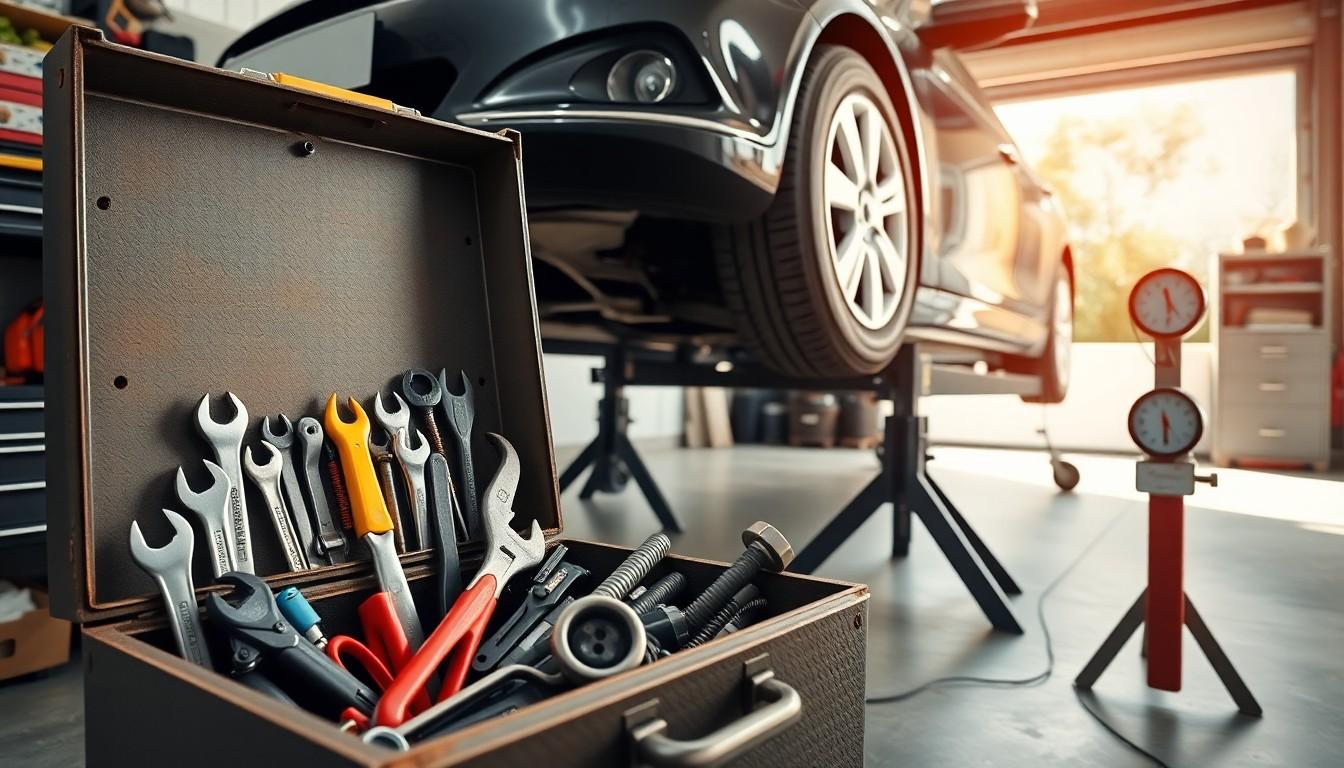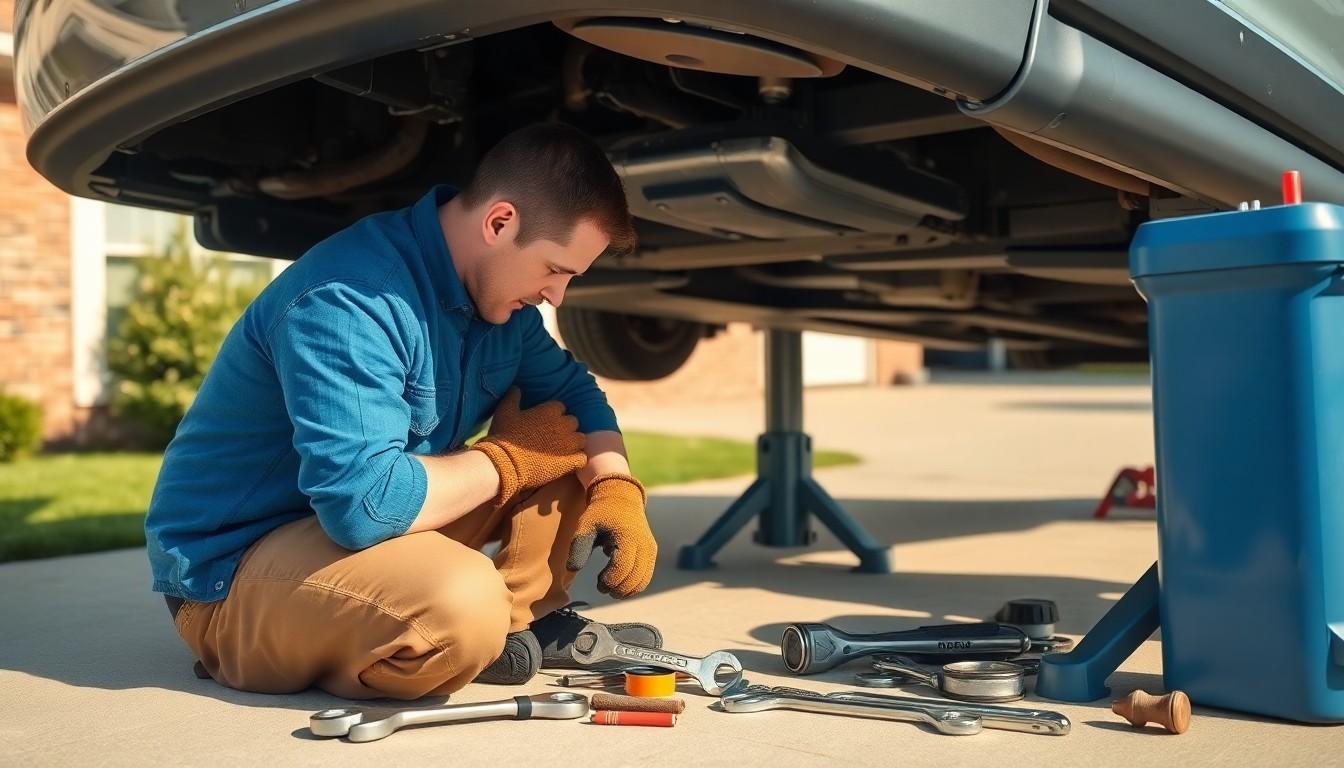Every car owner knows that sinking feeling when the check engine light flickers on like a bad reality show. But fear not! With a little know-how and some elbow grease, anyone can tackle DIY car maintenance like a pro. Imagine saving money and impressing friends with your newfound skills—after all, who wouldn’t want to be the hero of their own automotive saga?
DIY Car Maintenance Tips
DIY car maintenance offers car owners a chance to take control of their vehicles. With basic knowledge, these tasks become manageable and rewarding.
Benefits of DIY Car Maintenance
Cost savings represent one of the primary advantages. Performing simple tasks like oil changes or filter replacements cuts down on labor expenses. Additionally, DIY maintenance fosters a deeper understanding of a car’s functions, empowering owners to troubleshoot minor issues. Routine care, such as tire rotations and fluid checks, boosts vehicle longevity and reliability. Owners gain confidence over time, often leading to more complex repairs. Ultimately, enjoying a sense of accomplishment adds to the benefits, creating a rewarding experience.
Common Myths About DIY Car Maintenance
Many believe that DIY car maintenance requires specialized training. In reality, online resources and tutorials make it accessible to all. Another misconception involves the perception of time commitment. Simple tasks can often take less than an hour, fitting easily into most schedules. Some also think that professional mechanics guarantee better results; however, proper research and preparation yield quality outcomes. Additionally, individuals frequently underestimate their skills, believing they lack the expertise needed for even basic tasks. These myths hinder potential DIY enthusiasts, limiting their engagement in their car’s upkeep.
Essential Tools for DIY Car Maintenance

Equipping a garage with the right tools makes DIY car maintenance much simpler. Having essential tools on hand facilitates various tasks, ensuring car owners can confidently tackle maintenance duties.
Must-Have Tools for Beginners
Wrenches, including adjustable and socket types, are crucial for loosening and tightening bolts. A jack and jack stands provide safe car elevation, allowing for effective access to various components. Pliers assist with gripping and twisting wires, while screwdrivers accommodate different screw types. An oil filter wrench simplifies oil changes, making filter removal hassle-free. Additionally, a tire pressure gauge ensures tires maintain optimal pressure for safety and performance.
Advanced Tools for Experienced DIYers
A multimeter aids in diagnosing electrical issues by measuring voltage, current, and resistance. Torque wrenches measure the tightness of bolts, preventing over-tightening and damage. Brake bleeder kits facilitate proper brake maintenance by removing air from brake lines. An OBD-II scanner reads diagnostic trouble codes, offering insight into vehicle performance. Creepers make working underneath the car comfortable, while an impact wrench speeds up tire changes and other fastener tasks.
Basic Maintenance Tasks
Basic maintenance tasks are essential for keeping a vehicle running smoothly. They help ensure long-lasting performance and increase reliability.
Checking and Changing Engine Oil
Checking engine oil regularly maintains optimal engine function. During inspections, locate the dipstick, remove it, and wipe it clean. Reinsert the dipstick and remove it again to check the oil level. Top off with the correct oil type if needed. Oil should be changed every 5,000 to 7,500 miles, depending on the vehicle. To change the oil, drain the old oil using a wrench, replace the oil filter, and refill with new oil. This routine task enhances engine life and efficiency, helping to avoid costly repairs.
Inspecting and Replacing Air Filters
Inspecting air filters contributes significantly to the vehicle’s efficiency. Drivers should check the air filter every 15,000 miles or when performing other maintenance tasks. A dirty air filter restricts airflow, reducing fuel efficiency. If it appears dirty or clogged, replacing it boosts performance. Generally, air filters can be replaced in just a few minutes. Simply remove the old filter and install the new one by following the manufacturer’s instructions. Maintaining clean air filters ensures optimal engine performance and fuel economy.
Seasonal Maintenance Tips
Seasonal maintenance ensures optimal vehicle performance year-round. By following these tips, car owners can prepare their vehicles for the challenges of winter and summer.
Preparing Your Car for Winter
Ensure proper winterization before the cold arrives. Check tire pressure regularly and inspect tread depth for adequate traction. Fluids require attention; antifreeze levels should meet manufacturer recommendations. Battery health matters; clean terminals and evaluate capacity to avoid starting issues. Wiper blades need replacement if streaking occurs. Examine headlights and taillights to ensure visibility during winter storms. Maintain an emergency kit that includes a blanket, jumper cables, flashlight, and non-perishable snacks.
Summer Car Care Essentials
Summer heat poses risks for vehicle performance. Start by inspecting the air conditioning system to guarantee comfort during hot drives. Tire maintenance remains crucial; check for wear and adequate inflation for safety. Engine coolant prevents overheating, so confirm that reservoirs are full. Windshield wiper fluid should be replenished for visibility in summer rain. Regularly clean the exterior and interior to maintain aesthetics and prevent damage. Consider applying a sunshade to protect the dashboard from UV rays and minimize cabin temperatures.
Troubleshooting Common Issues
Car owners face various warning signs that indicate maintenance needs. One of the most common signals is the check engine light. This light can signal a range of issues, from minor to severe. Unusual noises, like grinding or rattling, and sudden changes in performance also merit attention. Pay attention to dashboard alerts, as they often provide specific information on vehicle health.
Identifying Warning Signs
Drivers can identify warning signs by observing changes in vehicle performance. For example, a drop in fuel efficiency may indicate a problem with the air filter. Strange smells, such as burnt rubber or fuel, often signal a potential issue. Excessive vibrations during driving can point to wheel alignment problems. Regular checks of fluids like oil and coolant can uncover leaks or low levels before they escalate.
Simple Fixes for Common Problems
Drivers can address minor issues with simple fixes. Replacing a clogged air filter usually takes only a few minutes and significantly boosts engine performance. Tightening loose battery connections often resolves starting problems. Drivers can check tire pressure monthly, ensuring optimal performance and safety. When windshield wipers streak, replacing them enhances visibility and driving safety. Regularly cleaning battery terminals can prevent corrosion and starting issues.
Embracing DIY car maintenance can transform the way owners interact with their vehicles. By taking on simple tasks and using the right tools anyone can save money while boosting their confidence. Regular upkeep not only enhances performance but also extends the life of the vehicle.
Equipping oneself with knowledge and skills allows for better troubleshooting and a deeper understanding of automotive care. With the right mindset and resources it’s possible to tackle common issues and maintain a reliable ride. Ultimately, DIY maintenance empowers car owners to take control of their automotive journey.

